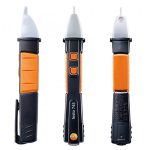Two of the foods that are most susceptible to environment changes during both the manufacturing and transport processes have been highlighted as high in Chinese demand, according to two new pieces studies.
China’s growing population and historical food ties with Australia make the research surrounding bread and yoghurt exciting for local manufacturers and export companies. However, as recent examples have illustrated – food safety is highly important to Chinese officials and one poor batch can spoil the broth.
Yoghurt demand
Research from Canadean has found that China is set to become the third largest market for drinking yoghurt products by 2016. Significant and sustained investment in the Chinese yoghurt market will see the demand surpass flavoured milk and grain, nut, rice and seek milk alternatives.
Drinking yoghurt has dramatically increased in popularity over recent years, based on increasing disposable incomes from a flourishing Chinese middle class. As well as this, health promotion of dairy products over social media has also gained significant traction since 2010.
Michael Loubser, beverage analyst at Canadean, said there was 110 per cent growth in the sector in 2013 and is expecting similar figures by the end of this year. He also detailed the increase in Chinese businesses investing in foreign dairy companies indicating strategic purchasing and farming cooperation opportunities.
“With insufficient supply of raw milk and rising raw milk prices in 2013, Chinese dairy producers devoted resources to maintaining steady milk supplies by investing more in milk sources and cattle ranches,” Mr Loubser said.
“These investments are now bearing fruit, with the drinking yoghurt category expected to experience steady growth well into 2019.”
Baked goods demand
Canadean also released information in relation to China’s burgeoning demand for overseas baked goods. Historically, Chinese consumers only ate traditional and locally manufactured products because of heavy duty placed on foreign exports.
However, as this policy has relaxed, China’s growing urban dweller population are reaching out for cakes, pastries and sweet pies. Although the market is still relatively small at this point, the room for improvement is massive and the research indicates that China will become the second most valuable market for bakery and cereal products by 2018.
At present, the average Chinese consumer only eats bakery or cereal goods 92 times a year, but Veronika Zhupanova, analyst at Canadean, said demand is constantly growing.
“Growing urbanisation will promote the growth of the Chinese middle class, which, in turn, will lead to a demand for a wider range of products,” she said.
“Manufacturers should take advantage of this trend and produce bakery and cereals items that serve as an energy boost for busy Chinese who skipped breakfast or need a snack break at work.”
Options for industry
With yoghurt and baked goods set to be front and centre of China’s demand in the coming years, it makes it important that food manufacturers are operating within best practice. Food industry professionals will also need ensure have the tools to constantly monitor production standards so the quality entering China doesn’t decrease and isn’t turned away at the border.
For both yoghurt and baked goods, Testo has a number options available for industry businesses.
– Yoghurt
As this product is complex in production, the pH levels present need to be perfect. If you are producing yoghurt, the pH level needs to be between 4.4 and 4.6 for the cooling of the cultural milk to take place.
The 206 pH2 – pH kit for semi solids is perfect for spot checks in factories to ensure levels are correct. This tester is leak-proof and is easy-to-clean for multiple batches.
– Baked goods
One issue surrounding baked goods in humidity levels during the transport stage. The yeast, particularly in bread, makes slight changes in temperature or humidity severely reduce quality and shelf life.
Businesses could use the testo 174H – Mini Humidity Data Logger which monitors levels of sensitive goods in storage. If limits are exceeded, an alarm sounds to indicate an issue.









 Reduce cooking oil costs while ensuring quality
Reduce cooking oil costs while ensuring quality Expert knowledge on CO2 monitoring
Expert knowledge on CO2 monitoring Refrigeration knowledge - in 3 modules
Refrigeration knowledge - in 3 modules



